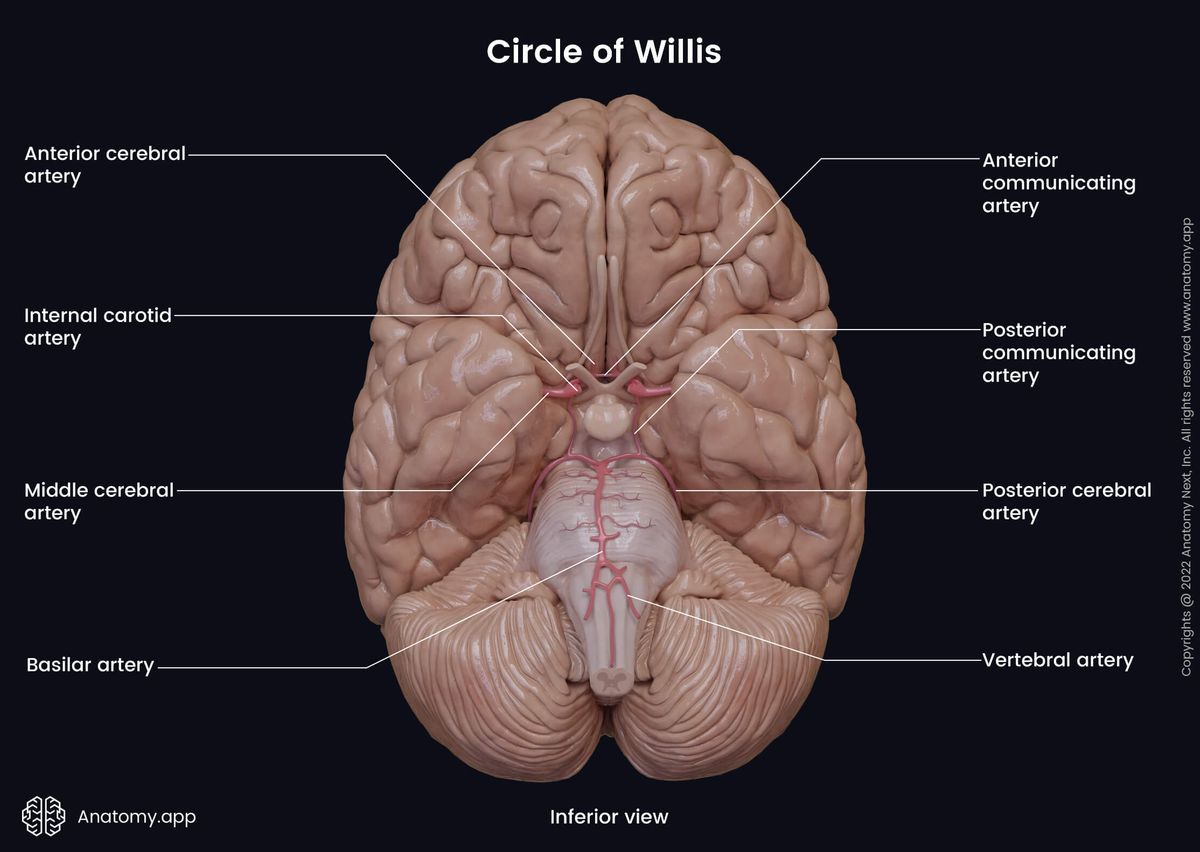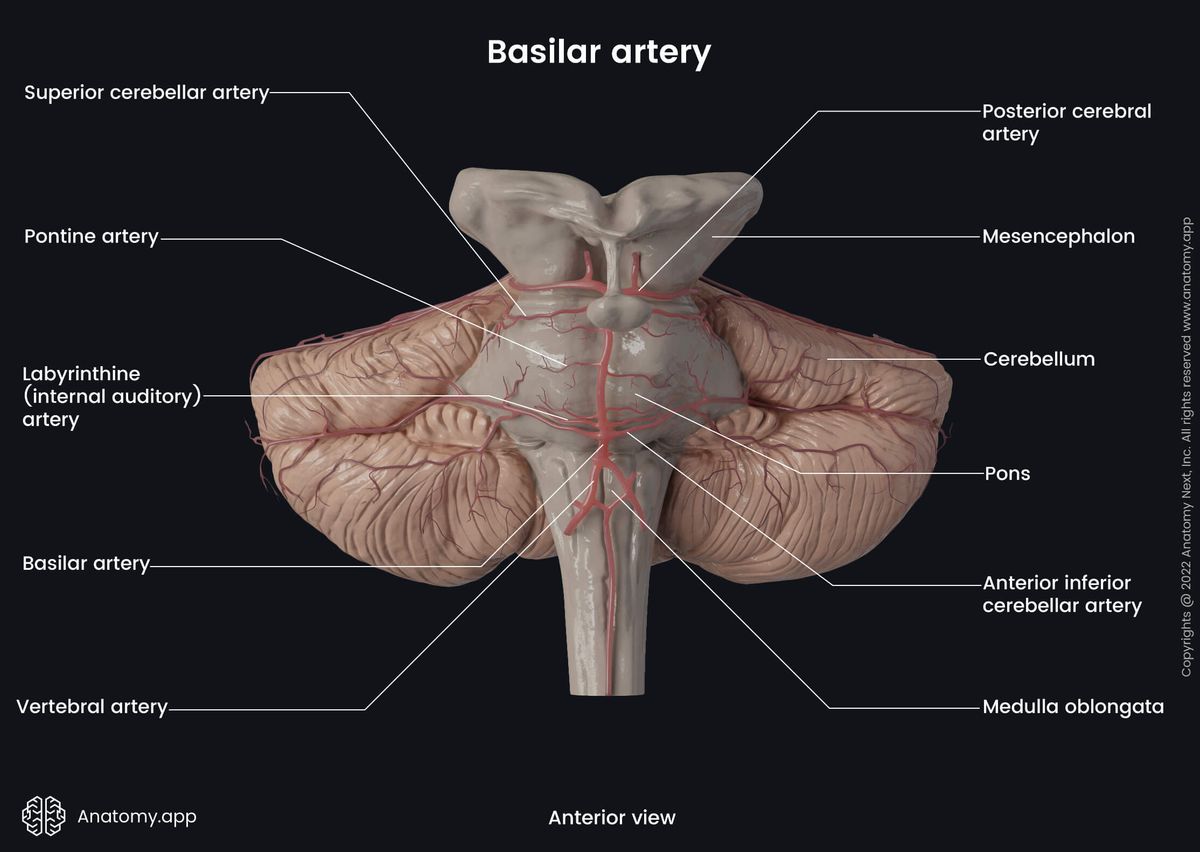- Anatomical terminology
- Skeletal system
- Joints
- Muscles
- Heart
- Blood vessels
- Blood vessels of systemic circulation
- Aorta
- Blood vessels of head and neck
- Arteries of head and neck
- Veins of head and neck
- Blood vessels of upper limb
- Blood vessels of thorax
- Blood vessels of abdomen
- Blood vessels of pelvis and lower limb
- Blood vessels of systemic circulation
- Nervous system
- Respiratory system
- Digestive system
- Lymphatic system
- Female reproductive system
- Male reproductive system
- Endocrine glands
- Eye
- Ear
Basilar artery
The basilar artery (Latin: arteria basilaris) is a single large blood vessel that is formed by the union of the two vertebral arteries. The basilar artery arises at the mid-medullary level, ascends vertically in a shallow medial groove on the ventral surface of the pons and reaches the interpeduncular cistern. Here, it divides into two posterior cerebral arteries - terminal branches of the basilar artery.
The basilar artery gives off several side branches, including:
- Pontine branches
- Labyrinthine (internal auditory) artery
- Anterior inferior cerebellar artery
- Superior cerebellar artery

The pontine branches of the basilar artery are small vessels that supply the pons. They originate from the front and sides of the basilar artery as it travels along the pons. The labyrinthine artery (also internal auditory artery) is a branch that sometimes arises from the lower part of the basilar artery. It supplies the vestibular apparatus and the cochlea.
The anterior inferior cerebellar artery (AICA) originates from the inferior part of the basilar artery and supplies the inferior cerebellar surface. The superior cerebellar artery arises from the superior part of the basilar artery and supplies the superior cerebellar surface, pineal body, superior medullary velum, and tela choroidea of the third ventricle.

Thus, regions supplied by the basilar artery include the pons, structures of the inner ear, inferior and superior cerebellar surfaces, upper medulla oblongata, pineal body, superior medullary velum, and tela choroidea of the third ventricle.